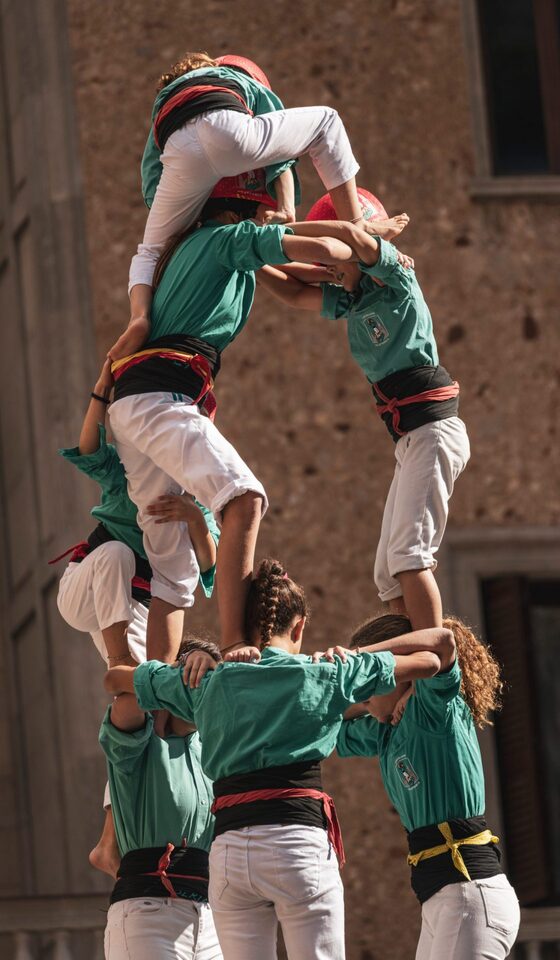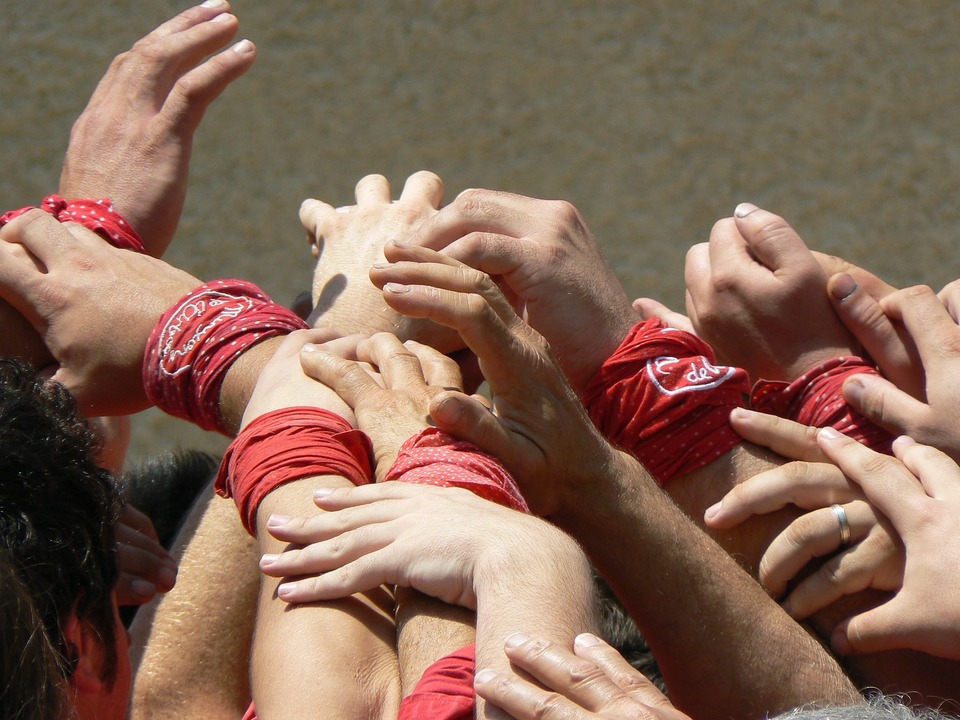Mathematicians are trying to determine the area of the pinya (the bottom base of the castell that sustains its weight) needed to avoid that, in the event of a fall, the impact could be outside of said area, thus hitting the ground and possibly causing major injuries. The researchers involved in the study are from the Universitat Politècnica de Catalunya-BarcelonaTech (UPC), the Universitat de Girona (UdG), the University of Lisbon, the University of Warwick and the Centre de Recerca Matemàtica. The project is being developed in conjunction with the collaboration of the Coordinator of the Colles Castelleres de Catalunya.
The castell (which translates into ‘castle’ in Catalan), is the human tower that is traditionally built at festivals all over Catalunya, representing unity and team spirit. A castell is successful when assembly and disassembly can be done in complete succession. The assembly is complete once all castellers have climbed into their designated places, and the enxaneta (the topmost casteller, usually a child) climbs into place at the top and raises one open hand. Aside from the people who climb to form the upper parts of the tower, others are needed to form the pinya. Members of the pinya act as a ‘safety net’ if the tower structure collapses, cushioning the fall of people from the upper levels.
To improve the security in the construction of these human towers, it is crucial to assess the elements involved in assembling and sustaining a castell, and the risks that may cause it to collapse. Based on this information, a mathematical model has been created to power a virtual fall system, that will eventually map the probability of impact on the pinya in the event of a fall.
The first part of the project has focused on investigating the construction of a castell and, specifically, its pillars since they are the simplest part of the structure, and then the methodology will be extended to more complex constructions. This is the first work that analyzes castles by proposing a mathematical model, obtained from the forces involved in a castell, which studies the structure of these constructions and their movements.
Having a model allows you to understand the key mechanical factors in the construction and success of a human tower. It also helps to know how a castell will evolve from a specific situation. In addition, the model analyzes and simulates the physical reactions of the people who form the structure, and can conceive many possible alternative scenarios. The second part of the project will be focused on validating and calibrating the theoretical study, by contrasting it with the actual data.

The study considers three different and complementary points of view in the construction phase of a pillar. First, the pillar is modeled — like a controlled inverted pendulum — to understand and predict how it will evolve. Second, the scientific team adds the individual reactions of the people who make up the castle (if they bend down, if they do more or less force, if they lean to one side…). And finally, the static problem is studied, in other words, the load supported by each casteller is measured and indicators are proposed to predict the viability of the pillar.
This scientific work originated in the framework of the 158th European Study Group with Industry (ESGI), held at the CRM at the beginning of 2020. In these meetings, mathematicians and scientists from related fields discuss applied problems of industrial or social relevance.
The research team that has been part of the study consists of Marta Pellicer (UdG); Antonio Rodríguez-Ferran, Jordi Saludes and Arnau Dòria-Cerezo (UPC); Aleix March San José (CRM); José Antunes (Instituto Superior Técnico, University of Lisbon), and Ferran Brosa Planella (University of Warwick).


